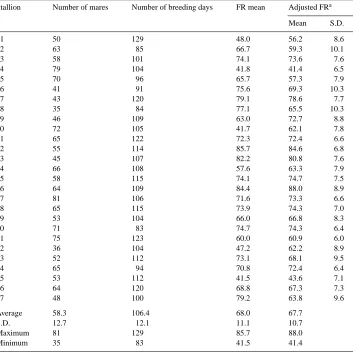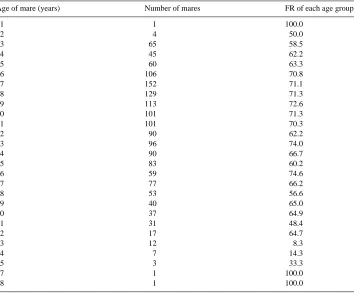Directory UMM :Data Elmu:jurnal:A:Animal Reproduction Science:Vol64.Issue1-2.Dec2000:
Teks penuh
Gambar




Dokumen terkait
The incidence of ovarian abnor- malities was not recorded in the present study, but any possible negative effect on embryo recovery appears to be constant since the numbers of
The presence of fibroblast growth factors and insulin-like growth factors in roe deer testicular tissue and their expression peaks during pre-rutting season in April (bFGF, IGF-II)
A similar pattern of change was observed for number of sperm in the ejaculate from November to March, however, dramatic changes in acrosin activity between July and October were
The main conclusions of these two experiments are that (1) feed restriction starting at luteolysis, hence occurring during recruitment and selection of the preovulatory follicles
The testes and epididymis weight was in 0.58% of body weight at 4 months of age and 0.42% at 24 months in our Tokara goats, reflecting a relatively small testis size.. Although
The first section of the book introduces the reader to the principles of ultrasonography before going on to cover general aspects of the reproductive tract and its
b Institut für Reproduktionsmedizin, Tierärztlichen Hochschule Hannover, Hannover, Germany c Centre for Food and Animal Research, Agriculture and Agri-Food Canada, Ottawa,
In the future, it is possible that reindeer under certain conditions might be kept in more intensive production systems. Limited access to high-quality winter pastures and


